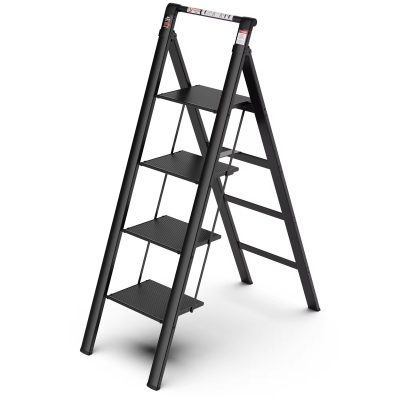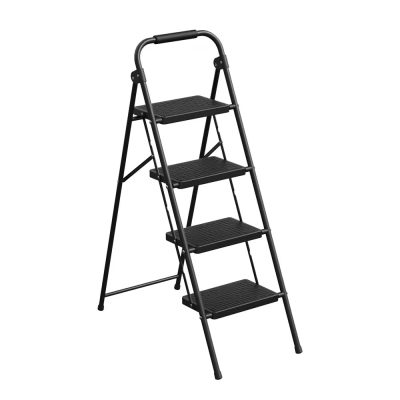Household ladders are indispensable tools in any home, offering a safe and efficient way to reach elevated areas for various tasks. From changing light bulbs to reaching high shelves, these versatile tools are essential for homeowners and renters alike. In this article, we’ll explore the different types of household ladders, their features, practical applications, and safety considerations, providing both professional insights and user-friendly advice.
Introduction to Household Ladders:
Household ladders come in various types and sizes, each designed to meet specific needs and preferences. Whether it’s a step ladder for quick indoor tasks or an extension ladder for outdoor projects, having the right ladder can make household chores safer and more manageable. Understanding the different types and features of household ladders is essential for selecting the right tool for the job.
Types of Household Ladders:
Step Ladders: Step ladders are the most common type of household ladder, featuring a self-supporting A-frame design with steps on one side. They are ideal for indoor tasks such as painting walls, changing light fixtures, or reaching high shelves in kitchens and closets. Look for step ladders with non-slip steps and a sturdy frame for stability and safety.
Extension Ladders: Extension ladders are designed for reaching higher areas, both indoors and outdoors. They consist of two or more sections that slide or telescope for adjustable height. Extension ladders are suitable for tasks such as cleaning gutters, trimming trees, or accessing roofs. Choose extension ladders with locking mechanisms and anti-slip feet for added stability and safety.
Platform Ladders: Platform ladders feature a large, flat platform at the top, providing a stable surface for standing or working. They are commonly used for tasks that require extended periods of standing, such as painting ceilings, installing light fixtures, or reaching high cabinets. Look for platform ladders with a wide base and handrails for additional stability and comfort.
Practical Applications:
Household ladders have countless practical applications in everyday life. Some common tasks include:
Changing light bulbs and smoke alarm batteries
Dusting ceiling fans and light fixtures
Reaching items on high shelves or in cabinets
Hanging curtains or pictures
Cleaning windows and gutters
Painting walls and ceilings
Repairing or installing fixtures
Safety Considerations:
Safety should always be a top priority when using household ladders. Here are some essential safety tips to keep in mind:
Inspect the ladder before each use for any damage or defects.
Place the ladder on a level and stable surface to prevent tipping.
Maintain three points of contact (two feet and one hand) when climbing or descending.
Do not exceed the maximum weight capacity of the ladder.
Never stand on the top step or platform of a ladder.
Keep the area around the ladder clear of obstacles and hazards.
Conclusion:
In conclusion, household ladders are essential tools for completing a wide range of tasks in the home. Whether it’s changing light bulbs, painting walls, or cleaning gutters, having the right ladder can make these tasks safer and more manageable. By understanding the different types of household ladders, their features, practical applications, and safety considerations, homeowners can select the right tool for the job and ensure a safe and successful outcome.







